The Africa Collection
Julia Friedel, Curator
The historical stocks of the African collection are composed of various different fields of collecting. A smaller part once belonged to the Senckenberg Natural History Society that was founded in 1817 in Frankfurt and collected materials as well as ethnographic objects from all over the world. Numerous objects were acquired by the museum from two other societies typical of the 19th century: the Anthropological and the Colonial Societies. From the start the museum established its own collection coming from persons of different social backgrounds: missionaries, colonial officials, diplomats, merchants, doctors, botanists, zoologists, etc. but explicitly commissioned explorers were also enlisted. These include Herzog [=Duke] Adolf Friedrich zu Mecklenburg who from 1910 to 1911 travelled the border regions of the then German colony Cameroon; Fritz and Wilhelm Jaspert who acquired a small valuable collection from different ethnic groups in Central Angola in 1927/ 1928; and, during the 1930s, Hans Himmelheber, a doctor, who brought home various important objects from the Ivory Coast. The last addition originating from an exploration was brought to the museum by none other than Leo Frobenius. His Africa Archives included collections that were transferred to the museum when Frobenius was appointed its director in 1935. During the Second World War an extensive part of the African Collection, especially from among its large sculptures, was destroyed. Today, this ethnographic collection contains apx. 14.000 objects of African art and culture.
The main geographical focus of the ethnographic collection is on the areas of Central Africa (Angola, Democratic Republic of Congo, Cameroon, Central African Republic, Rwanda) and North Eastern and Eastern Africa (Ethiopia, Sudan, Somalia, Uganda, Kenya). Historically important objects from Nigeria and South Africa are to be recorded.
Since 1974 works of contemporary art have continually been added to the ethnographic collection meanwhile comprising 2.800 items. It is therefore the largest body of contemporary African art to be found in an ethnographic museum in German-speaking countries.
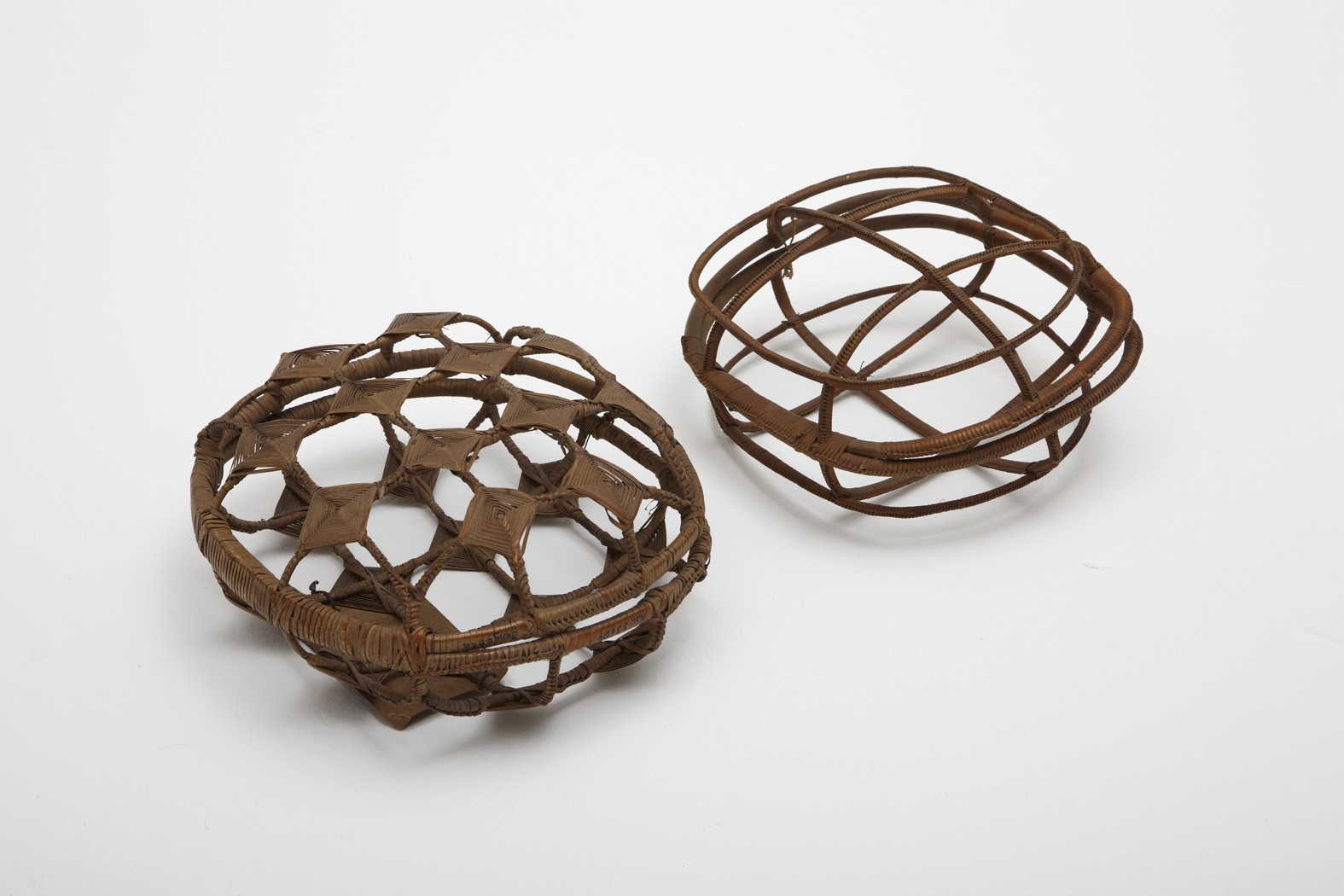 Cane Object, Nguela, Angola, purchased 1941.
Cane Object, Nguela, Angola, purchased 1941.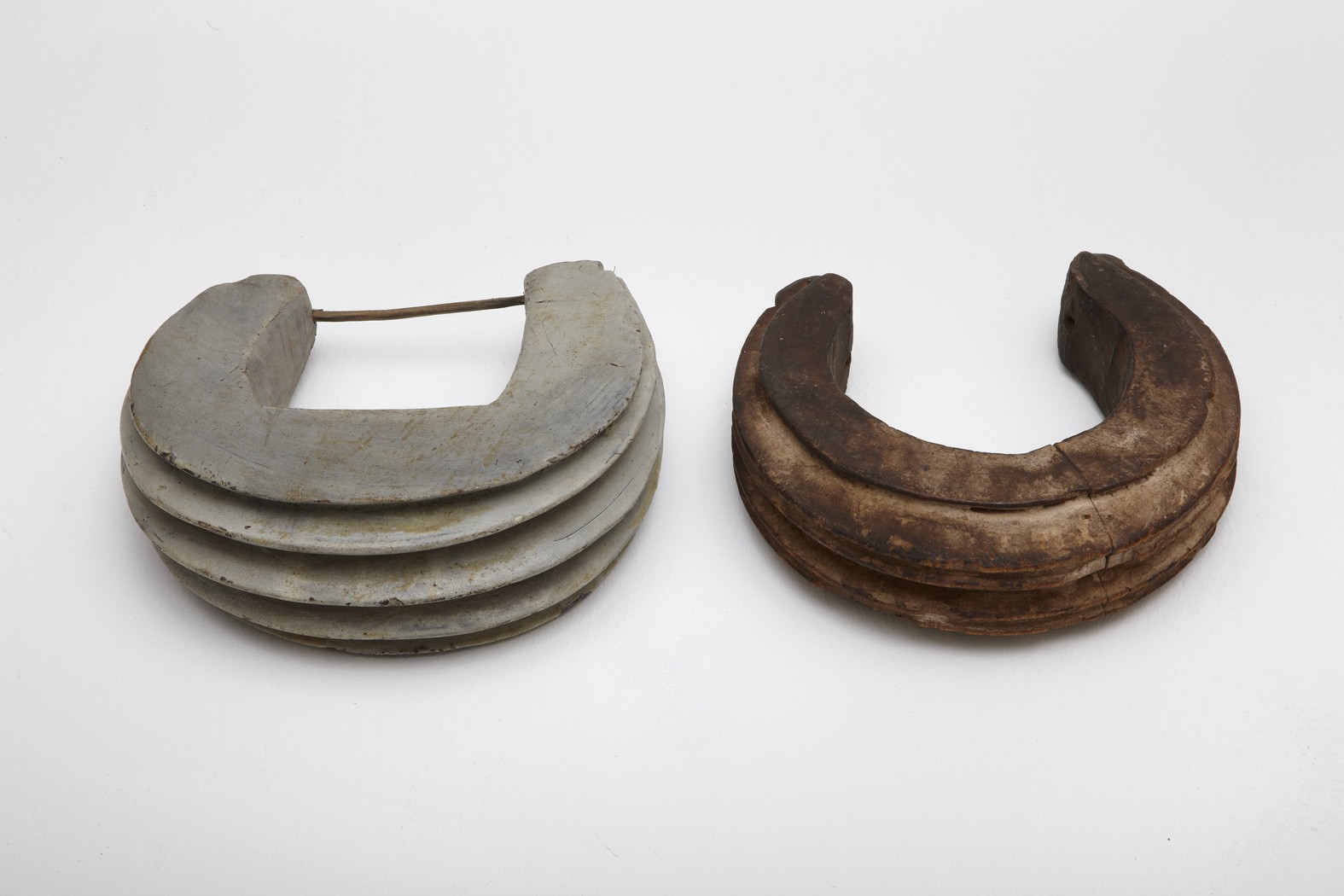 Left: Choker, Bane, Fang, Cameroon, swapped 1939. Right: Choker, Mwei/Fang, Cameroon, collected 1900-08.
Left: Choker, Bane, Fang, Cameroon, swapped 1939. Right: Choker, Mwei/Fang, Cameroon, collected 1900-08.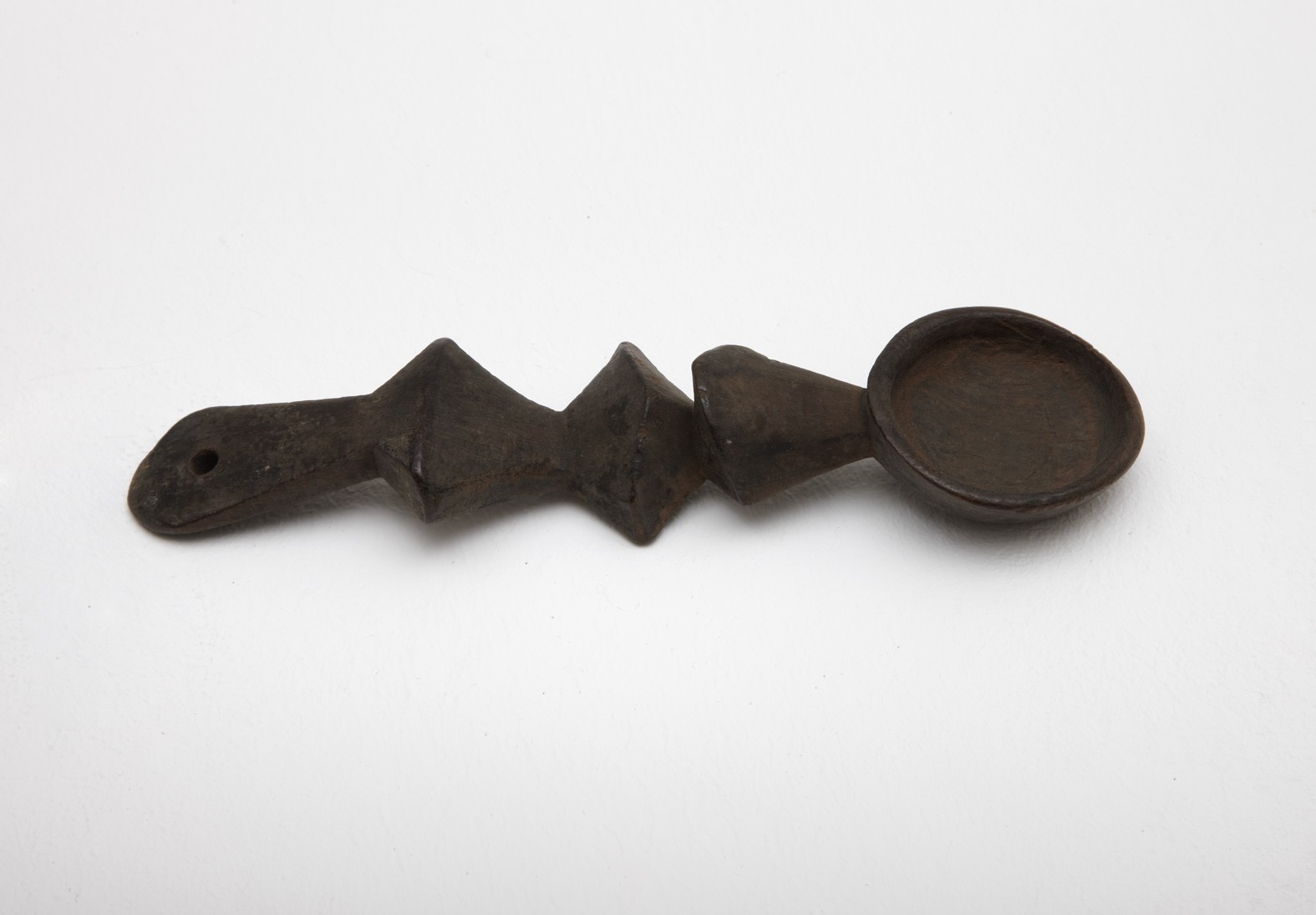 Spoon, Zimbabwe, South Africa, collected 1928-30.
Spoon, Zimbabwe, South Africa, collected 1928-30.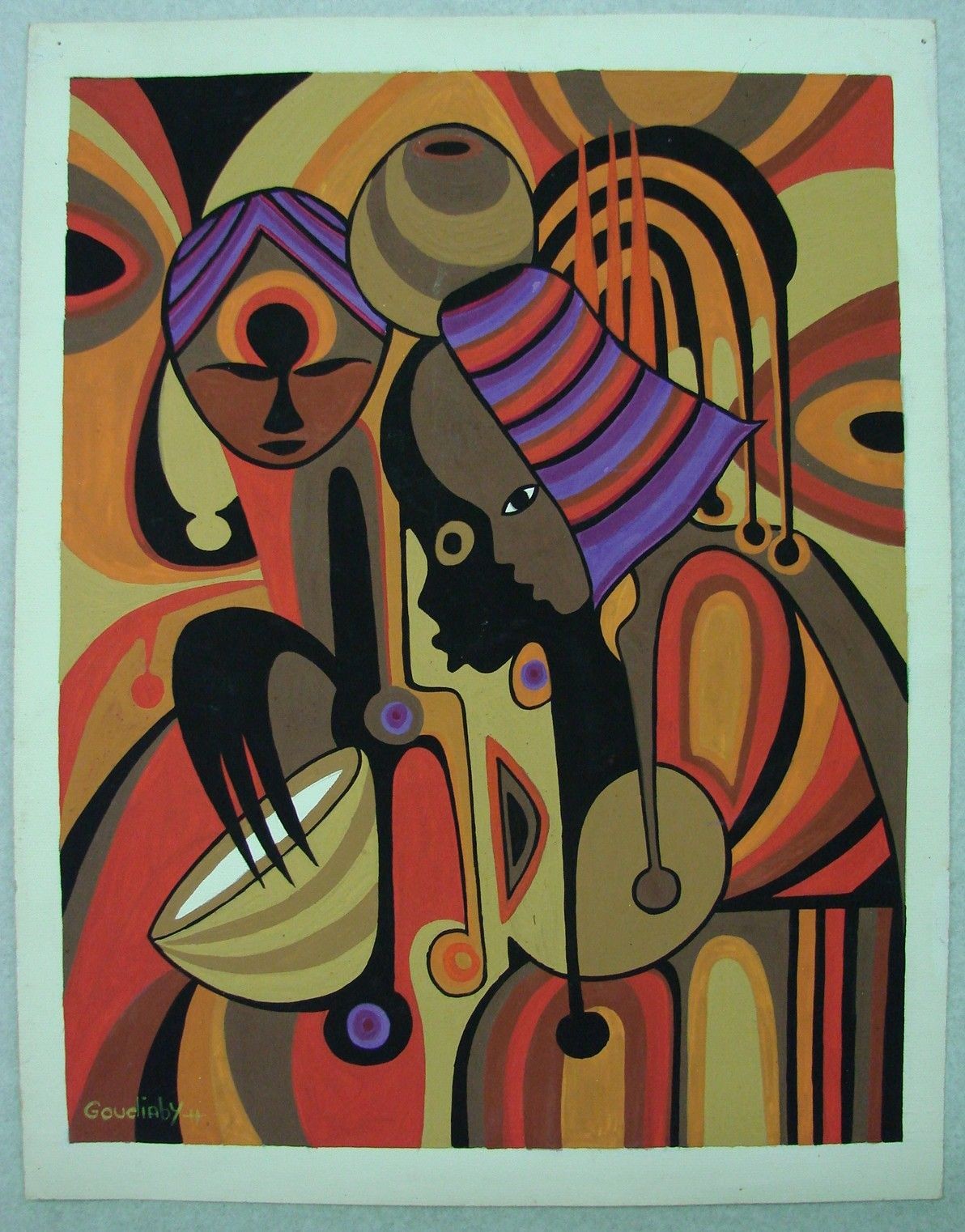 Boubacar Goudiaby, L'initiation, purchased 1987
Boubacar Goudiaby, L'initiation, purchased 1987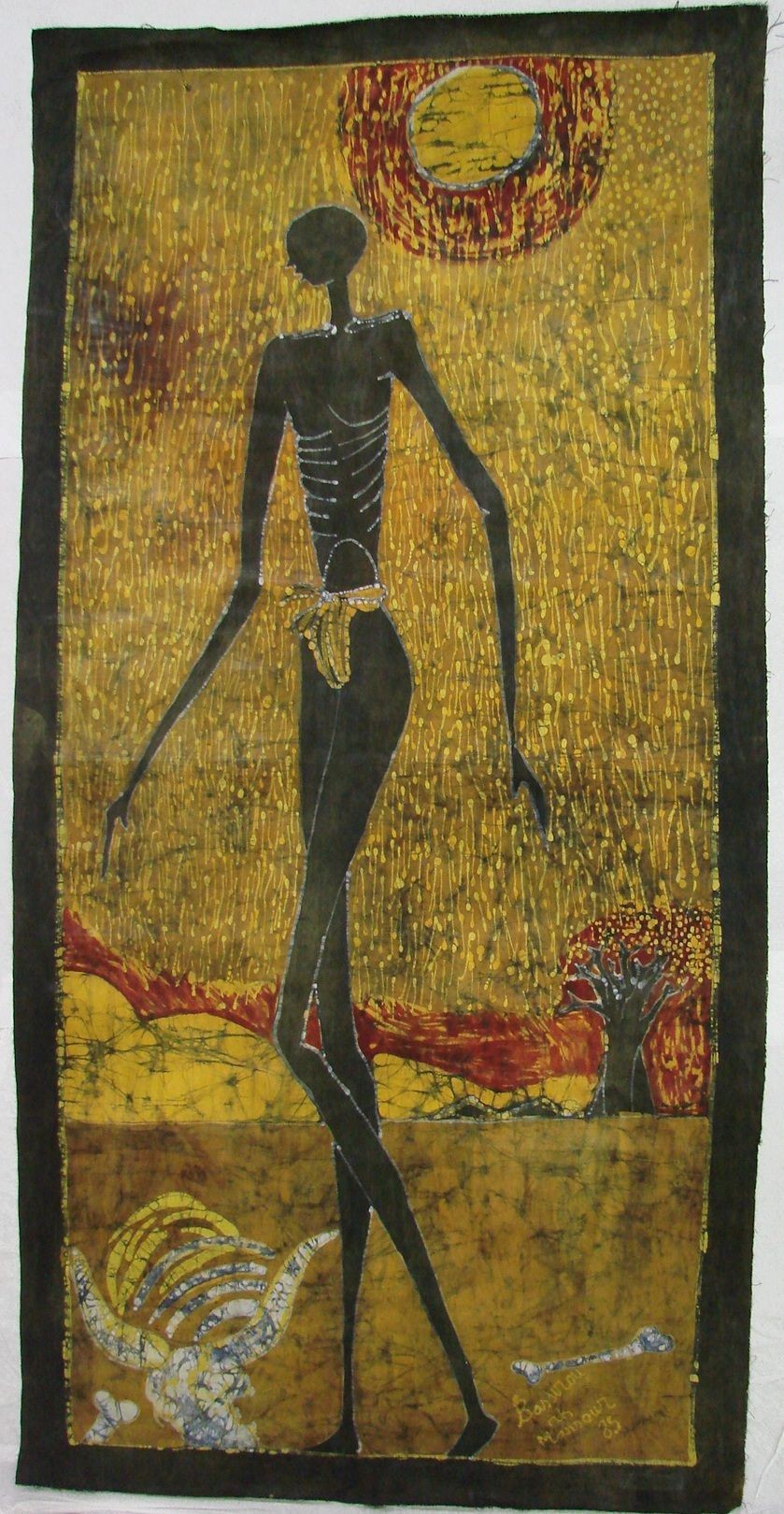 El Hadji Ciss, Harte Erde, purchased 1987
El Hadji Ciss, Harte Erde, purchased 1987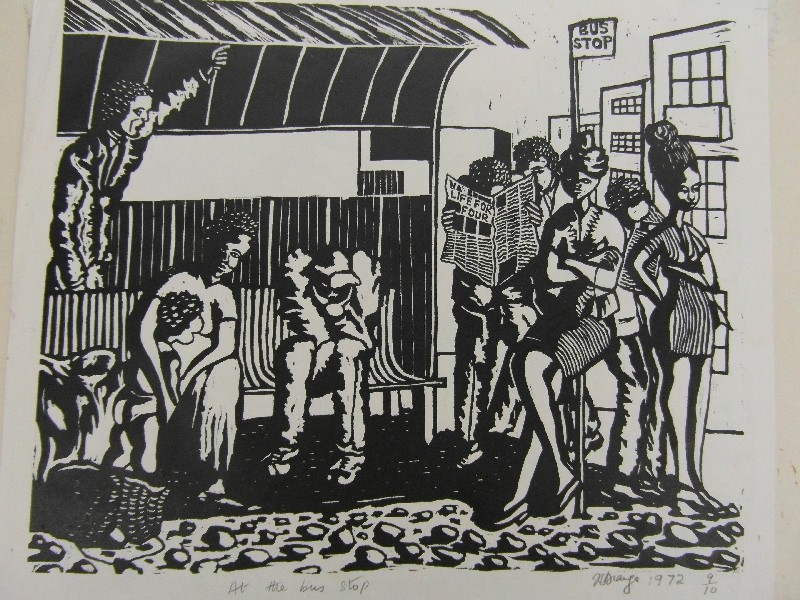 John Obaso Diang'a, At the Bus Stop, purchased 1986.
John Obaso Diang'a, At the Bus Stop, purchased 1986.
